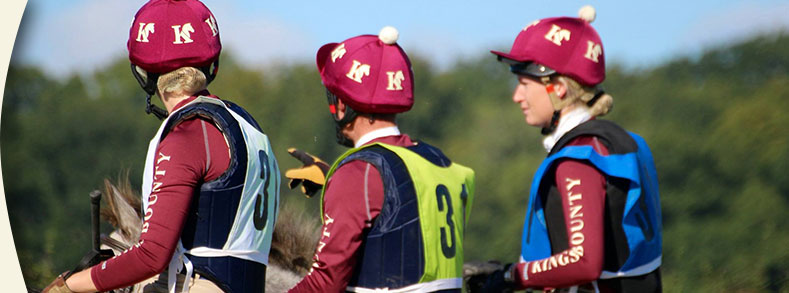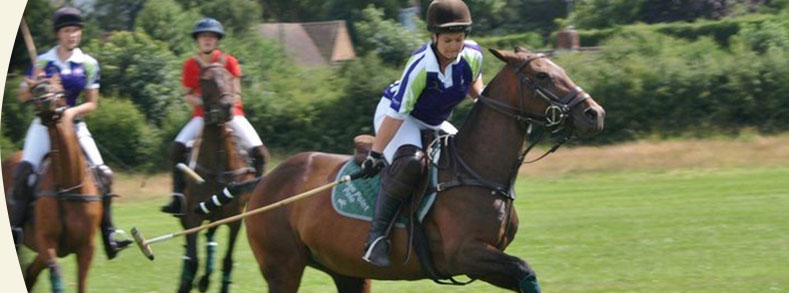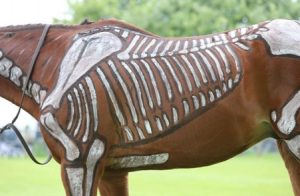Back Pain in Horses – A Common Cause of Poor Performance
Back pain is often investigated as a cause of poor performance in horses. It can involve bony, muscular and ligamentous pathologies and can either be primary or secondary to lameness. The picture below points out some key areas for pathology.
Image courtesy of Bridgefield Physiotherapy
Horses with back pain can present with a variety of clinical signs. An accurate clinical history from the owner is vital to ascertain when the signs arise and if there is a pattern or common scenario that causes the signs e.g. a particular saddle, certain rider etc.
 Initially, we will examine the horse at rest. Palpation of the horse at rest enables us to assess:
Initially, we will examine the horse at rest. Palpation of the horse at rest enables us to assess:
– The horse’s conformation
– Any abnormalities on palpation of the limbs that could be causing lameness
– Symmetry of the horse –is there any evidence of muscle atrophy
– Neck range of motion. Any thickening of the cervical facet joints in the neck?
– Any evidence of midline pain.
– Any evidence of muscular tension/ spasm in the thoracolumbar and sacroiliac region.
After this, a standard orthopaedic examination is carried out. This includes: a trot up, flexion tests and lunging on both reins on a hard and soft surface. Horses with back pain may show one or more of the following:
– Boarding/ guarding through the back and a stiff gait
– Reluctance to lower the head and neck
– Lack of impulsion
– ‘Bunny hopping’ gait of the hindlimbs in the canter.
If it is safe to do so, horses will often be assessed ridden. Observing the horse being tacked up and mounted is a useful exercise to see if there is any evidence of pain or evasive behaviour. When assessing horses ridden, we will evaluate the horse for any evidence of lameness, gait abnormality, resistance to work on the bit, evasive behaviours and whether there are any difficulties with transitions or specific movements. It can be useful to have the horse ridden by more than one rider to see if the clinical signs are consistent.
So what causes back pain?
Common causes of back pain in horses are:
- Impinging dorsal spinous processes (Kissing Spines).
- Fractured dorsal spinous processes (DSPs) due to a fall or blunt trauma.
- Sacroiliac joint disease
- Muscle Pain/ damage/ soft tissue damage – This can be as simple as being caused by an ill fitting saddle!
- Vertebral body articular process joint disease
Other less common causes include vertebral body fractures, intervertebral disc prolapses and rib fractures.
How do we investigate it further?
Diagnostic imaging is useful in investigating causes of back pain further. Radiographs enable us to assess the DSPs and see if there is any evidence of impinging DSPs or fractures. Radiographs can also be used to assess the vertebral bodies and articular process joints however due to the large size of horses and their heavy muscling, these usually need to be taken in a hospital with a gantry mounted, high output generator to obtain sufficient images. Ultrasound can be used to assess the articular facet joints in the back e.g. assess for signs of osteoarthritis and to also assess the soft tissue structures for injury e.g. supraspinous ligament or dorsal ligaments of the sacroiliac joint. Nuclear scintigraphy (bone scan) is a useful imaging modality for investigating back pain. It is often used when radiographic images cannot easily be obtained i.e. issues with the pelvis, to confirm the significance of radiographic abnormalities or if violent behaviour under saddle does not allow the safe use of diagnostic analgesia.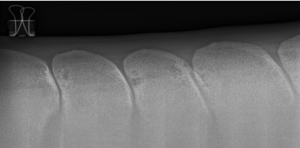
Radiograph showing evidence of Kissing Spines in a horse
If diagnostic imaging shows abnormalities, diagnostic analgesia (instilling local anaesthetic in/ around the area with changes) can be carried out to determine the significance of the abnormalities by assessing the horse moving before and after the injections.
We have a diagnosis, so now what?
Once the cause of back pain has been determined, a treatment plan can be formulated. Conservative treatment is often preferred as the first line approach and in some cases e.g. sacroiliac issues, is the only treatment option. Conservative treatment options include:
- Exercise modification
- Systemic medication:
– Anti-inflammatories – mainly useful in the case of a primary muscle injury or sprain.
– Bisphosphonate Drugs e.g. Tildren, Osphos. These inhibit the cells involved in bone resorption, a process that is considered painful therefore bisphosphonates alleviate this pain.
- Local medication e.g. corticosteroids. These have anti-inflammatory and analgesic (pain relief) properties and can be injected either intraarticularly (into a joint) or perilesionally (around the lesion). Sarapin is another analgesic agent that is derived from the pitcher plant. It has been used for the management of neuromuscular pain in humans and can be used in conjunction with corticosteroids to provide analgesia (pain relief).
- Mesotherapy
- Complementary Therapy e.g. physiotherapy, acupuncture and chiropractic technique.
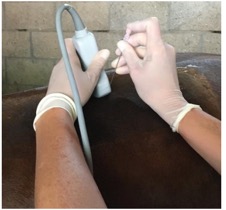
Picture showing ultrasound guided medication of the lumbar facet joints in a horse
Surgical treatments are not appropriate or available for all conditions involving the thoracolumbar vertebral column. There are several surgical options for treatment of impinging DSPs however there are no surgical options for managing arthritis of the articular process joints or sacroiliac disease.
Surgical techniques for the management of impinging DSPs aim to reduce the degree of impingement physically, consequently removing the pain caused by bone rubbing on bone. Surgical options include:
1. Ostectomy of the affected DSP whereby the summit of the DSP is removed. This can be done under standing sedation or under general anaesthetic.
2. Cranial wedge ostectomy (more recent technique) where only the cranial third of the DSP is resected.
3. Desmotomy of the interspinous ligaments (less invasive technique). This involves cutting the interspinous ligaments between the DSPs to allow the DSPs to move further apart.
It must be noted that in some cases, even with surgical correction, horses may still demonstrate signs of back pain, suggesting that some of the signs are due to a learnt behaviour in the anticipation of pain.











